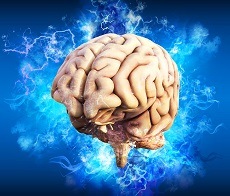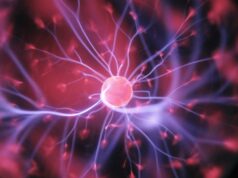 A double-blinded randomised controlled trial (RCT) has shown that transcutaneous auricular vagus nerve stimulation (taVNS) can improve cognitive performance in patients with mild cognitive impairment (MCI), offering evidence that this “inexpensive, effective and innovative” technique could be recommended to a greater number of patients with a view to preventing or prolonging the development of MCI into dementia.
A double-blinded randomised controlled trial (RCT) has shown that transcutaneous auricular vagus nerve stimulation (taVNS) can improve cognitive performance in patients with mild cognitive impairment (MCI), offering evidence that this “inexpensive, effective and innovative” technique could be recommended to a greater number of patients with a view to preventing or prolonging the development of MCI into dementia.
These findings have been published in Brain Stimulation by Peijing Rong (China Academy of Chinese Medical Sciences, Beijing, China) and colleagues, who claim this constitutes the first global RCT investigating taVNS in the management of MCI.
It is “particularly important” to prevent or prolong the development of MCI into dementia, the authors note initially. Both auriculotherapy and VNS are effective in improving cognitive functions, they continue, but there is no double-blinded RCT evidence to support the effectiveness of transcutaneous electrical stimulation of auricular acupoints in patients with MCI.
In view of this, Rong and colleagues conducted an RCT enrolling MCI patients aged 55–75 years who were randomly allocated to receive either taVNS or a sham treatment.
In the taVNS group, two auricular acupoints were stimulated—in the heart (concha, CO15) and in the kidney (CO10), both of which the researchers note are in the distribution of the vagus nerve. In the sham taVNS group, two other auricular acupoints in the elbow (scaphoid fossa, SF3) and the shoulder (SF4,5) were stimulated. Both of these sites are outside the distribution of the vagus nerve.
The primary outcome for Rong and colleagues’ study was the Montreal cognitive assessment-basic (MoCA-B), while the secondary outcomes included the auditory verbal learning test-HuaShan version (AVLT-H), shape trails test A and B (STT-A&B), animal fluence test (AFT), Boston naming test (BNT), Pittsburgh sleep quality index (PSQI), rapid eye movement sleep behaviour disorder screening questionnaire (RBDSQ), Epworth sleepiness scale (ESS) and functional activities questionnaire (FAQ).
The authors further detail that these outcome measures were taken at baseline, and then also 24 weeks later following treatment.
After 24 weeks of intervention, the data of 52 patients were available for analysis. Rong and colleagues observed a “significant difference” in the overall MoCA-B scores between the taVNS group and the sham taVNS group, while MoCA-B scores also “increased significantly” following intervention—versus prior to intervention—in the taVNS group.
“As for N5 and N7—the two sub-indicators of AVLT-H—in the taVNS group, compared with before intervention, both N5 and N7 increased significantly after intervention,” they add. “As for STT-B, in the taVNS group, compared with before intervention, STT-B was significantly reduced after intervention.”
The authors go on to detail that BNT increased significantly following intervention, while PSQI, RBDSQ, ESS and FAQ all decreased significantly after intervention, in the taVNS group.
Regarding safety outcomes in the study, one patient with a history of tympanic membrane perforation in the taVNS group was reported to have experienced mild adverse reactions that disappeared a week after termination of taVNS, according to Rong and colleagues.
While their concluding finding is that “the intervention of taVNS is effective on increasing the overall scores of MoCA-B, N5 and N7”, the authors assert that further investigations into this technology as an MCI treatment are “still required”.












